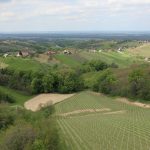That time of the year when everyone is confused about whether you mean the old time or the new has come – daylight saving time reached Croatia last night.
When local standard time was about to reach, 02:00:00 clocks were turned forward 1 hour to 03:00:00 local daylight time instead, shocking you to the core while you were drinking your beer last night and leading to the terrible realization that you’ll spend less time out and making you utter all the poetic Croatian swearwords that you know when your alarm went off this morning (read more about them here).
Known as Spring Forward, Summer Time, and Daylight Savings Time (DST), was first used in Canada in 1908, but the idea had emerged before.
According to Time and Date , Ancient civilizations are known to have engaged in a practice similar to modern DST where they would adjust their daily schedules to the Sun’s schedule. For example, the Roman water clocks used different scales for different months of the year.
American inventor and politician Benjamin Franklin wrote an essay called “An Economical Project for Diminishing the Cost of Light” to the editor of The Journal of Paris in 1784. In the essay, he jokingly suggested that Parisians could economize candle usage by getting people out of bed earlier in the morning, making use of the natural morning light instead.

In 1895, New Zealand scientist George Vernon Hudson presented a paper to the Wellington Philosophical Society, proposing a two-hour shift forward in October and a two-hour shift back in March. There was interest in the idea, but it was never followed through.
In 1905, independently from Hudson, British builder William Willett suggested a slightly more complicated option – setting the clocks ahead 20 minutes on each of the four Sundays in April, and switching them back by the same amount on each of the four Sundays in September, a total of eight time switches per year.
The German Empire and Austria-Hungary organized the first nationwide implementation, starting on April 30, 1916. The idea was to minimize the use of artificial lighting in order to save fuel for the war effort during World War I. The idea was quickly followed by the UK and many other countries, including France. Many countries reverted back to standard time after WW I, and it wasn’t until the next World War that DST made its return in most of Europe.
Nowadays, the EU and the rest of Europe all change their clocks, but Iceland chooses not to; most of Australian states and territories adopt DTS; but Western Australia, Queensland, and the Northern Territory do not.
Most of Africa opts out of Daylight Savings Time, but there are some exceptions, like Egypt, Libya, and Namibia; most countries near the equator don’t change their clocks and neither do Japan, China, South Korea or Taiwan.
People in favour of DST claim that it saves energy, is good for your health because you spend more time outside, reduces traffic accidents due to bigger visibility, and is good for business.
People against it (including every person on Earth who likes to sleep) claim that it does not save energy and it disrupts our natural biorhythm and can actually lead to bigger risk of heart attacks.
But did you also know that it has an effect on trick-or-treaters, can thwart bombing and affects voter turnout at elections?
Here are some DTS Fun Facts from Acurite and National Geographic.
– Bombing Thwarted
In September 1999, the West Bank was on Daylight Saving Time while Israel had just switched back to standard time. West Bank terrorists prepared time bombs and smuggled them to their Israeli counterparts, who misunderstood the time on the bombs. As the bombs were being planted, they exploded – one hour too early – killing three terrorists instead of the intended victims (two busloads of people).
– Halloween Trick-or-Treaters
Through 2006, Daylight Saving Time in the U.S. ended a few days before Halloween (October 31). Children’s pedestrian deaths are four times higher on Halloween than on any other night of the year. A new law to extend DST to the first Sunday in November took effect in 2007, with the purpose of providing trick-or-treaters more light and therefore more safety from traffic accidents. For decades, candy manufacturers lobbied for a Daylight Saving Time extension to Halloween, as many of the young trick-or-treaters gathering candy are not allowed out after dark, and thus an added hour of light means a big holiday treat for the candy industry. Anecdotally, the 2007 switch may not have had much effect, as it appeared that children simply waited until dark to go trick-or-treating.
– Chaos of Non-Uniform DST In the USA
Widespread confusion was created during the 1950s and 1960s when each U.S. locality could start and end Daylight Saving Time as it desired. One year, 23 different pairs of DST start and end dates were used in Iowa alone. For exactly five weeks each year, Boston, New York, and Philadelphia were not on the same time as Washington D.C., Cleveland, or Baltimore–but Chicago was. And, on one Ohio to West Virginia bus route, passengers had to change their watches seven times in 35 miles! The situation led to millions of dollars in costs to several industries, especially those involving transportation and communications. Extra railroad timetables alone cost the today’s equivalent of over $12 million per year.
– Radio Stations
AM radio signals propagate much further at night than during the day. During daytime, more stations in neighboring areas can broadcast on the same frequency without interfering with each other. Because of this situation, there are hundreds of stations licensed to operate only in the daytime. Daylight Saving Time can affect the bottom line of these daytime-only radio stations: during parts of the year it can cause the stations to lose their most profitable time of day–the morning drive time. The gain of an hour of daylight – and thus broadcast time – in the evening does not fully compensate for the morning loss.
– Voter Turnout in Elections
Through 2006, the Daylight Saving Time period has closed on the last Sunday in October, about a week before Election Day, which is held the Tuesday after the first Monday in November. The extension of Daylight Saving Time into November has been proposed as a way to encourage greater voter participation, the theory being that more people would go to the polls if it was still light when they returned home from work. The U.S. law taking effect in 2007 pushes the end of Daylight Saving Time to the first Sunday in November. In some years (2010, 2021, 2027, and 2032), this will fall after Election Day, giving researchers the opportunity to gauge its effect on voter turnout.
– Amtrak
To keep to their published timetables, trains cannot leave a station before the scheduled time. So, when the clocks fall back one hour in October, all Amtrak trains in the U.S. that are running on time stop at 2:00 a.m. and wait one hour before resuming. Overnight passengers are often surprised to find their train at a dead stop and their travel time an hour longer than expected. At the spring Daylight Saving Time change, trains instantaneously become an hour behind schedule at 2:00 a.m., but they just keep going and do their best to make up the time.
– Violent Crime
A study by the U.S. Law Enforcement Assistance Administration found that crime was consistently less during periods of Daylight Saving Time than during comparable standard time periods. Data showed violent crime down 10 to 13 percent. It is clear that for most crimes where darkness is a factor, such as muggings, there are many more incidents after dusk than before dawn, so light in the evening is most welcome.
– Oil Conservation
Following the 1973 oil embargo, the U.S. Congress extended Daylight Saving Time to 8 months, rather than the normal six months. During that time, the U.S. Department of Transportation found that observing Daylight Saving Time in March and April saved the equivalent in energy of 10,000 barrels of oil each day – a total of 600,000 barrels in each of those two years.
Likewise, in 1986, Daylight Saving Time moved from the last Sunday in April to the first Sunday in April. No change was made to the ending date of the last Sunday in October. Adding the entire month of April to Daylight Saving Time is estimated to save the U.S. about 300,000 barrels of oil each year.
Beginning in 2007, Daylight Saving Time commenced on the second Sunday in March and ended on the first Sunday in November, thereby saving even more oil.
– Births and Birthdays
While twins born at 11:55 p.m. and 12:05 a.m. may have different birthdays, Daylight Saving Time can change birth order — on paper, anyway. During the time change in the fall, one baby could be born at 1:55 a.m. and the sibling born ten minutes later, at 1:05 a.m. In the spring, there is a gap when no babies are born at all: from 2:00 a.m. to 3:00 a.m.
In November 2007, Laura Cirioli of North Carolina gave birth to Peter at 1:32 a.m. and, 34 minutes later, to Allison. However, because Daylight Saving Time reverted to Standard Time at 2:00 a.m., Allison was born at 1:06 a.m.
– Heart attacks
Shifting our clocks an hour naturally makes for a few groggy mornings, but some research suggests a far more dangerous impact to our bodies—an increased risk of heart attack. A 2012 study by University of Alabama at Birmingham’s Martin Young found that the risk of heart attack surges by 10 percent on the Monday and Tuesday after moving the clocks ahead an hour each spring.
“Exactly why this happens is not known but there are several theories,” Young said in a statement accompanying the study.
“Sleep deprivation, the body’s circadian clock, and immune responses all can come into play when considering reasons that changing the time by an hour can be detrimental to someone’s health.”
The research reinforces 2008 findings published in the New England Journal of Medicine showing that in Sweden, heart-attack risk rose just after the spring time change.
“The most likely explanation to our findings are disturbed sleep and disruption of biological rhythms,” lead author Imre Janszky, of the Norwegian University of Science and Technology, told National Geographic News in 2010.









